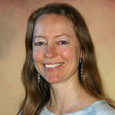Many people I meet are concerned about getting more rounded and stooped over as they get older. This condition is called Kyphosis or ‘Dowager’s Hump’. It’s when the thoracic vertebrae in the upper spine curve forward excessively. This can lead to back and neck pain, due to strain on the muscles that occurs with misaligned posture, and loss of height. Over time, this change in bony alignment can even compromise the function of the organs, including negative effects on the circulatory system. Plus, most people don’t like the way they look when the spine rounds forward in this way.
The good news is that you can change your posture at any age. The alignments of the Balance Posture Method can help you to prevent or correct this extreme rounding. These alignments are based on studying healthy populations of people without back and joint pain, who also stay straight into their old age. By imitating how these people move, you can dramatically improve your posture.
Check Your Posture
The most important and surprising aspect of this shift is the fact that these healthy people do NOT tuck their pelvis – in sitting, standing, or walking. So to get started, notice how you’re sitting right now. Are you sitting on the back of your pelvis, or are you sitting on your sitz bones (‘ischial tuberosities’). These are the bones in your pelvis that are also sometimes called the ‘butt bones’. If you are sitting on the back of your pelvis instead of on these bones, then here’s how to correct that:
- lean forward from your hip joints (not your waist)
- pull your feet back slightly so they are under the chair
- place your hands on the sides of the chair seat
- lift your pelvis up off the chair and aim the front of it towards the chair seat
- once you’ve touched down, you can lift up again if you aren’t all the way back in your chair, and move to the back of the chair
- then unbend from your hip joints and lean back against the chair
- now you should be able to feel the sitz bones underneath you
- this works more easily if you are on a fairly firm chair with a flat seat
In standing, also check that your pelvis is not thrust forward. This can be very deceptive. Most people I meet think that they are leaning forward, because their head, shoulders and upper back are rounded forward. Actually, they are leaning backwards! If you can stop this tendency to push the pelvis forward, this will also help reduce the tendency to get a hump back. When the pelvis is forward, it causes the lower back to lean backwards, and then the upper back has to compensate by rounding forwards.
Lifting the chest by arching the back also causes excess curvature of the spine, and fatigue in the back muscles. Once your pelvis is under you instead of in front of you, relax your back and let your chest drop. This helps to straighten your lower spine. There is no way to straighten the upper spine until you straighten your lower spine.
Once your lower spine starts to straighten by following these guidelines, you will stop the CAUSE of the upper back roundedness. Without stopping the cause, strengthening exercises will not be very effective. Then, to work with the symptom of the roundedness, you can begin to do exercises to stretch and strengthen the muscles in the upper back, shoulders, chest and neck.
The unhealthy posture common to almost all Americans these days can cause extreme roundedness of the upper spine (kyphosis). Before you begin a program of stretching and strengthening exercises for your upper back, make sure to stop causing the problem by pushing your pelvis forward, sitting too far back on your pelvis, or lifting your chest. Once you’ve mastered these postural shifts, strengthening exercises can make a big difference in straightening your upper spine, and you can regain height, decrease pain and look better at the same time!
© 2009 Dana K. Davis
Dana Davis, MA, CYT: Dana is a Senior Certified Balance Teacher by the Balance Center in Palo Alto, California, where she has studied and worked with Jean Couch (author of The Runner's Yoga Book) since 1996. She has practiced yoga since 1984 and is a graduate of the 3-year Advanced Studies Program at the Yoga Room in Berkeley.

Post new comment
Please Register or Login to post new comment.